The easiest way to feel the pulse of the richness and diversity of Indian cultural traditions is through the medium of folk art. So far as folk dances are concerned they have a variety of features in different terrains of India. India has a large legacy of classical dances. In comparison to the classical form of dances, the folk dances are much popular as they are easier to perform and understand. The Southern state of India- Kerala is very popular in folk dances like other parts of India. The present blog focuses on the famous traditional dance of Kerala. You come across the various form of popular Kerala folk dances of such as Kathakali, Mohiniyattam, theryan etc these so forms of dances have their unique features of presentations and expressions.
The diverse forms of folk arts of Kerala are not only confined to the state but the prominent forms have acclaimed national and universal recognition, these dance forms focuses on mythological dance drama and consist of elegant costumes, heavy makeup and expression of diverse Mudras (Movement of fingers and palm). Music for this performance is provided by Karnatak style with toppi maddalam (barrel drum) and Vina (lute). Thus dance form was very popular from 9 to 12th century during the reign of chera dynasty. The leisurely movements of the performer, elegant costumes, traditional jewellery enchant the audience.
Mohiniattam Dance – Major Classical dance of Kerala
This is one of the most popular dance forms of Kerala. It is performed by solo female dance as it’s name signifies – Mohiniyattam. This word is made by the blend of two words – Mohini and Yattam.
Mohini means maiden while yattam signifies dance. This dance is a sort of synthesis of Bharatnatyam and kathakali. The legends say that during the sagar Manthan (Ocean churning) event lord Vishnu disguised himself as Mohini and performed dance. Just to make the event this form of dance was very popular among the Devdasis. A Mohiniattam performance involves nearly 60 adavus (dance steps), or poses. The dancers are dressed in white and gold and have jasmine flowers on their heads in traditional fashion. The dancing involves gliding movements of the body and graceful expressions. The technique follows the Hastha Lakshanadeepika, which is the textbook on Mudras.

This famous dance form of Kerala which originated in the 16th century A.D involves soft footsteps, sober construes in white and gold with the accompaniment of Carnatic vocal music. During the British epoch, this form of dance was redialed on account of Devarsi tradition. Subs equally same laws were framed banning it. In the later stage, the renewed interest of Keralite masses helped it in Mohiniyattam’s revival. Originally the dance was performed solo but presently in the modern era, it is also performed in groups.
The dance form has evolved over the years and is still taught today. It originated as a traditional performance art and is considered one of the most beautiful dance forms in the world. It is one of the oldest and most popular dance forms in India.
Kathakali- One of the top Kerala folk dances
This is one of the most noteworthy dances of Kerala Kathakali literally signifies “story Play” Katha means story and Kali signifies play. This dance form has a history of 500 and is a perfect fusion of dance, music, melodrama religions there, choreography, and gestures.
The drama portrayed in Kathakali’s performance is based on mythology and legends. The themes are adapted either from the Mahabharath or the Ramayana or from the purans. The aparts of Kathakali are derived from old Sanskrit texts such as Natya Shastra.

Read More Blogs –
- IRCTC Login Train Ticket Booking & Updates
- Agra Petha History, Recipe and Famous Stores
- Get to Know about Taj Mahal Tours & Tickets
Kathakali Make ups– The most sticking feature of this dance is the 5 types of make ups with paints of various colours. These are called vesham and signify a special character in dance. These veshans are – Pacha Kathi, Munukku, Kari and thadi. The magnificence of Kathakali lies in it’s décor like kireetam (big ornamental headgear and the Kauchukam (oversized Jackets).
Details of 5 Veshams –
- Kathi (Knife) – This Vesham represents tracachuous and villainous characters.
- Pacha (Green) – The green makeup portrays the noble characters.
- Thadi (Beards) – There are 3 types of thadis.
- Vella Thadi (White Beard) This represents the superhuman protagonists such as
- Chuvanna Thadi (Red Beard) is for evil characters.
- Karutha Thadi(Black Beard) for the hunter
- Kari (Black) – The Vesham is used for she demons.
- Minukku – This Vesham is used for sages and feminine characters.
Theyyam – Famous dance of Kerala
This is a very popular dance form of the Malabar area of Kerala. The word Theyyam is supposed to have origin from the corruption form of “Daivan” which signifies God in Malayalam language. A key point of Kerala’s Art form is that most of the dance forms evolved from the temple rituals and are based on the mythological stories of deities. Theyyam is one such type of ritual and is supposed to have nearly 400 variations. The performers of Theyyam belong to the lower caste. Most of these 4 performers are male. Only in Devakoothu Theyyam is the only are performed by women.
Scores of temples of Kannur, Nileswaram, Karivalloor celebrate Theyyam performances every year. Which include dance, mime, and music. From December to April one can witness Theyyam performances. In these Theyyam rituals, each artist represents a hero with great power. The artists are clad in flamboyant costumes and wear heavy makeup. Their headgears and ornaments captivate the heart of the audience.
Suggested Tour Packages :-
- Kerala Tour Packages
- India Tour Packages
- Rajasthan Tour Packages
- Taj Mahal Tour
- Golden Triangle Tour With Amritsar
- Varanasi Tour Packages
- Delhi Tour Packages
- Golden Triangle Tour Packages
- One Day Trip from Delhi
- Jaipur Tour
Read about the traditional dance theater of Uttar Pradesh – Traditions of Nautanki and Ramlila

Velakali – One of the most popular Kerala folk dances
This popular art form of Kerala is a sort of martial dance in which the performers. Showcase their expertise of body movements with swords and shields. The performances are done on the tunes of musical instruments such as Kombu, Maddalam etc.
Velakali is an ancient martial art form of Kerala, performed by Nair men. It originated among the traditional warriors of Kerala and is presented in a temple courtyard annually. The dance is performed by warriors dressed in a conical headdress and chest decorations. The performers will engage in vigorous movements and sword play, accompanied by an orchestra. The performance consists of several acts, each of which is unique to its location.
This dance form is a kind of allegorical expression of the war between kaurawas and Pandavas. During the dance huge effigies are put at the eastern entrance of Padmanabhswamy temple and they represent pandavas Valakali dancers represent the Kaurawasand their dance represent the battle between cousins. This performance depicts the victory of dharma over adharm and the victory of Bheem over the Kauravas. Velakali has no recorded etymology, but it is thought to have originated in the ancient kingdom of Ambalappuzha. The original chieftains were Mathoor Panickers and Velloor Kurups, two hereditary chieftains. Both families maintained kalaris to train warriors. Nearly all art forms of India trace their roots back to the divine, revealing that they are means to an end, rather than a means of self-expression.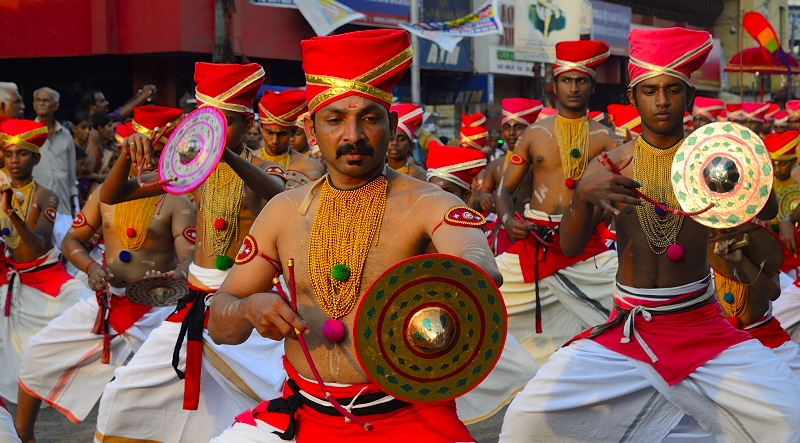
Thiruvathirakali- one of the most popular Kerala folk dances
Thiruvathirakali is also known by the name as Kaikottikilis. This is a special dance performance done by the group of women on the auspicious day of thiruvathira which is the birthday of lord shiva. It is celebrated in the Malayalam month of Dhanu.
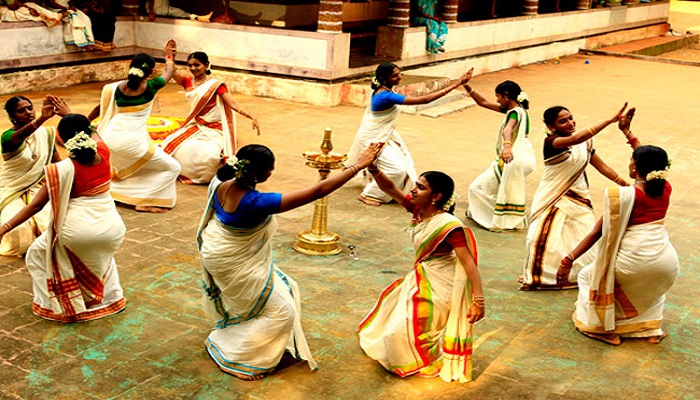
Why Thiruvathirakali dance performed?
The principal reason behind the performance of this dance is to delve deep into everlasting marital bless and for longevity of the spouse. Thus the ladies invoke the shakti who revived the cuprid from the wrath of lord Shiva.
Story Behind Thiruvatirakali – The story of this dance ritual can be traced back in the Hindu mythology. According to the legend a widow larnerited incessantly on the loss of her consort. This Laurent was so powerful that it cleft the heart of Parvati and she persuaded lord to revive the lady’s husband. Lord shiva had to suverder to the coercions of Goddess Parvati. Just to mark the event the ladies perform this dance for the long life of their husband. In this dance performance a lamp is lit and around it ladies make dancing movements with clapping of their hands and singing.
Kutiyattam – Kerala famous dance
This is a famous temple art form. In the dramatic performance both men and women take part. The male performers are from chakkiyar community while the female are from Nangiyar community. They perform for 6 to 20days inside the temples. Sanskrit verses are recited with music of drums and cymbals.
The art of Kutiyattam is a unique art form. It is performed in the theatre and involves a number of different characters and is often long and elaborate. It requires the audience to identify with the action and engage in a form of imaginative identification, but it also requires critical distance. The performances of Kutiyattam are a reflection of the emotional, intellectual, and spiritual dimensions of a situation and the actors play many roles.
A kutiyattam play can last several days, and may begin with flashback scenes of the characters. It is a beautiful and uniquely Indian art form that clearly reflects the culture of the people who perform it. The costumes are colorful, made of cotton, and are very intricately designed, adorned with embroidery on the back and sleeves. A kutiyattam performance is an experience that should not be missed.
The actors in kutiyattam are trained to imitate every facial expression and gesture of the character. Each actor is a different character and each character has a distinct costume and facial expressions. The actors’ hands are in their mouths and their faces are illuminated by an oil lamp. The audience is invited to sing along with the story, which is written in Sanskrit and played on the stage.
Read more related blog : –
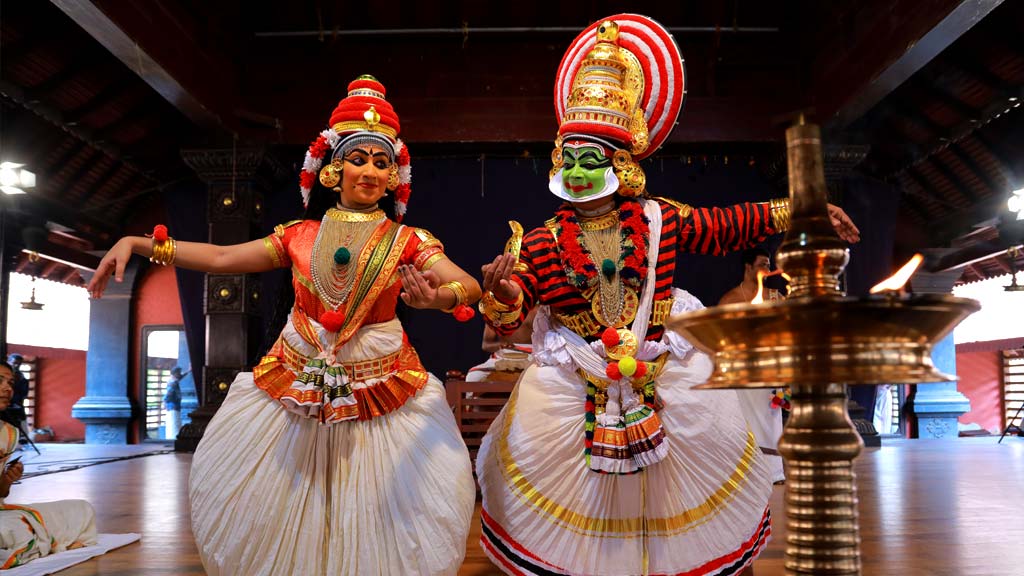
Chakyar Koothu – Kerala traditional dance
This is most refined traditional dance form of Kerala. In this performance the dancers narrate the scenes from the epics of the Ramayan and the Mahabharat. This dance is performed inside the temples on festivals and other auspicious occasions.
The Chakyar Koothu is one of the most popular classical dance forms in Kerala. It blends social satire, mime and comedy. The performance is usually a solo act performed by a Chakkiar. The actors don masks and perform with sandalwood, which accentuates the nuances of their facial expressions. The show is a unique experience that is a must-see for all visitors to the state.
Chakyar koothu is a one-man show that features an amateur actor narrating the stories of the great tales of Kerela. This form of theatre is a part of the Ambalavasi Nambiar community and is more than 1800 years old. The performance features very minimal choreography and is based on a story in Sanskrit. The improvisation and wit of the performers make the audience laugh and enjoy the show.
The Chakyar performs this dance as a devotee seeking the blessings of the God. During the performance, he takes on different roles. He becomes a lucid singer and narrator, illuminating the meaning of Sanskrit verses and drawing a comparison between society and the world. He then performs a dazzling dance while educating and entertaining the audience.
The Chakyar community has continued to perform this art form. The traditional performance of the Chakyar Koothu is accompanied by a mizhavu and a pair of ilathalam. The Chakyar Koothu is considered the most refined form of this art form, and it is widely performed at festivals and in temples. It is a unique experience, and you won’t regret it!
Suggested Tours
- Golden Triangle Tour of Kerala
- Golden Triangle of Tamilnadu
- Rajasthan Tours
- Mumbai Tour Packages
- Amritsar Tour Packages
Kavadiyattam- Major Kerala dance form
This dance is performed in all subramanya temples. As peacock is considered the steed of Lord Subramanya, the performers carry a bow adorned with the plums of peacock the devotees stick the offerings at the end of a long pole and sing devotional songs.
Kavadiyattam is a dance form of devotion that originated in Tamilnadu. The dance involves performing a ritual act with a saffron or yellow cloth and carrying a kavadi, a sacred object. The performers spin and twist in the sacred ash to the rhythm of rising beats and carry peacock feathers as offerings to the Lord. During the performance, different troupes and individuals wear different sizes and shapes of kavadis, each with their own significance and symbolism.
Traditionally, Kavadiyattam is performed at Subramanya temples in Kerala. The dancers wear bright robes and carry a huge bow decorated with peacock feathers called the kavadi. This beautiful ritual art is named Kavadiyattam, which literally means “dance carrying a kavadi”. The kavadies are often different shapes and sizes, each with a special meaning.
The kavadis themselves are a sacrifice. They are attached to the dancers by hooks, swords, and thin spears. The kavadis pierce their backs, cheeks, and mouths, and little to no blood is spilled during the procession. This ritual is not a religious rite, but one of humility and devotion. And it’s not just a ritual – the dance is also considered a form of devotion.
The ritual dance of Kavadiyattam is a major attraction in many Subramanya temples. It’s said to honor the Goddess Parvati, the goddess of mercy. It is performed to honor the god Subramanya. The dancers wear peacock feathers and carry it on long poles. The kavadi’s name comes from its bow shape, which is a symbol of the burdens carried by the devotees. The bows are made of wood and stick to the poles.
Kolkali
This dance is one of the most popular dances of Kerala. In this a group of 24 performers from the agrarian class take part. Wooden sticks are used by the dancers as props. Both ladies and gents move in a circular nation beating their sticks and thus enjoying the mirth.
Kolkali is a popular folk dance of Kerala. It is characterized by a circular rhythm and striking of sticks by the dancers. The performers form pairs and move in response to the music, using their hands to create the musical rhythm. The characters move in an arc-like pattern, with vigorous movements and sweeping movements. The pace and intensity of the performance increase as the music increases. The tempo and intensity of the dance often vary from performance to performance.
The dance is primarily performed with two-foot-long sticks called mundus. The dancers move in a circular formation striking them with their sticks. As they move in unison, the rhythm is created by special movements. The circle gradually expands as the performance proceeds, and the performance reaches its climax. This dance is a traditional celebration of family and community unity. Its rhythm is reminiscent of the martial art Kalaripayattu.
The traditional Kolkali dance is performed in the Malabar region of India. The artists perform the dance in a circle, striking small sticks and keeping time with a series of special steps. The performance reaches a frenzy-like climax when the dancers are surrounded by the dancers in a large circle. They use unique moves to keep time. They often move slowly, striking their sticks to make rhythm.

Padayani
Padayani literally signifies a roul of soldiers. This ritualistic dance performance is done in Bhadrakali temples from December to may. This is performed to appease goddess kali who turned furious after Danuka’s death just are type of Musical instrument is used to relate the song called the Thappu.
The annual Hindu festival of Padayani is an exorcism for village and its inhabitants. The festival has different rituals and dances and is very popular amongst the people of Kerala. It is believed that this dance will drive away the evil forces.The Padayani is a mythical story about the victory of Lord Shiva over the demonic deity Kaali. The legend says that the divine power defeated the demonic deity. As a result, the padayani is the most important festival of Hinduism. The mythical story focuses on the sacrificial rituals. The sacrificial rites of this festival are not to be taken lightly, as it is a religious practice.
The padayani prayer consists of three cantos, and a traditional priest or lower caste performs each one. Each canto is composed of textual compositions and visual structures. The main rituals are the response to offerings and sending of the deity to abodeity. The Padayani festival is celebrated during the Makaram month. The rituals surrounding it are primarily religious. The performance of the padayani is a spectacle of devotion.

Kalaripayattu
This is considered as the mother of modern martial art. This was practiced in the older era by the warriors to gain power and learn to ways of self defence. This art form involves activities like jumping, running etc some special features of the combat are oil massage and the use of old weapons.
The study of kalaripayattu is often akin to a martial art, where the goal is to harness the power of the body and mind to achieve the ideal state. While some kalaripayattu gurus focus on physical practice, others also practice spiritual practices. Whatever the goal, a great instructor will teach you how to balance the physical and spiritual aspects of the martial art.
There are several different styles of kalaripayattu, and some of them focus on physical grace and beauty of movement. Other styles focus on powerful movements and incapacitating an opponent. Students train in various physical techniques such as grappling and rolling, and use staffs to combat their opponents. After completing the basics of the art, students can apply the techniques to real situations. These skills will help them become better leaders and improve their lives.
Kalaripayattu is an ancient martial art that is still practiced today. It is a unique style and code of ethics, and is performed in a variety of settings. Traditionally, the movements of kalaripayattu were derived from observation of the eight “warrior” animals that lived in Kerala. Each animal represented a specific position, with a specific function. Ultimately, a practitioner can adapt the art to any situation by incorporating different types of physical techniques into their training.
The third stage of Kalaripayattu training is known as Angathari. Students at this stage demonstrate complete control of their bodies and minds. At this level, students can begin to use sharp metal weapons such as a sword, a dagger, and a bow. These Lethal Weapons are introduced slowly at each level of training. As the student’s skill increases, advanced combat techniques can be learned.
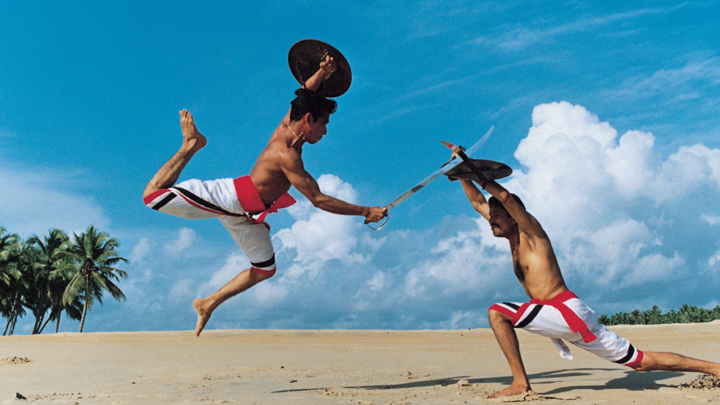
Pulikalli- One of the top Kerala folk dances
this is performed by the deftly handed artists to entertain guests on the eve of Onam. Which is a major harvest festival of Kerala the dancers paint their bodies to give the impression of tigers. The men move about like tigers with huge bellies.
Pulikali is an ancient form of performance that originated in Cochin two centuries ago. It is a traditional ritual performed by artists trained in the art. The dance is a celebration of the wild spirit and bravery. Artists portray tigers and hunters and dance to drumbeats of the festival. Today, women are taking part in this unique tradition to break down gender barriers. Here are some facts about the pulikali festival:
The dance dates back over 200 years and is considered a folk art that has a strong connection to the history of Kerala. It was introduced by Maharaja Rama Varma Sakthan Thampuran, who wanted a dance that captured the wild spirit of the state. Since then, the Pulikkali has evolved and incorporated other elements into its performance. Initially, participants wore self-painted masks, but today they use masks that are ready-made and have been specially crafted for this purpose. Other details include facial hair, beards, and mustaches.
The processions begin at 4 pm on the first day of Onam. The crowds gather at the Naduvilaal grounds to watch the Pulikali troupes. The tigers walk out dressed in regal regalia, pay homage to a local shrine, and then proceed to the main thoroughfares. There, they perform in groups of ten to twelve men, sometimes with two or three tigers. The larger tigers add a bounce to the dance and add more color to the beat.
Thullal
The word “Thullal” literally signify to jump about in mirth. This art form developed in Kerala in 18th century. This ia a solo performance combining both dance and recitation. In this dance form the tale is derived from the Puranas and narrated in verse.
A traditional dance of Kerala, thullal is a unique form of theatre and music, which combines singing, rhythm, and hand gestures. It is performed by troupes of artistes in ensembles, with actors and musicians performing songs and dancing to the rhythm. The performers, known as thullaiyappa, usually perform ten or more stories. The performance is an elaborate ritual that is held during special occasions and temple festivals.
The word thullal derives from the Dravidian language and means to jump. Its origin dates back to over 200 years, and has a satirical tone. The term ‘thullal’ was first used in Kerala as a way to describe a play. In the eighteenth century, it was created by the renowned playwright Kunchan Nambiar. Though it is an ancient performance, thullal has become popular in modern India.
The Thullal style is performed by female and male dancers. Each performer recite a line of text and the background singer repeats it. The dancers interact with the audience during the pauses between the singing and dancing. The Thullal performance also features a drummer who plays the Mrdangam barrel drum, as well as the singer and the mizhavu. The music is accompanied by cymbals and the sound of a mizhavu drum.
A thullal performance is an intricate and elaborate theatrical performance of the Hindu epic poem, the Mahabharata. It is a solo form of dance that is often accompanied by an orchestra. The three most common forms of thullal are Ottan, S i tankan, and Parayan, which are characterized by a firm step and a variety of costumes. The thullal is a unique form of dance with complex rituals and intricate music. It is difficult to find a sufficient audience for this art, but once the stage is set, the performances can be seen by many people.

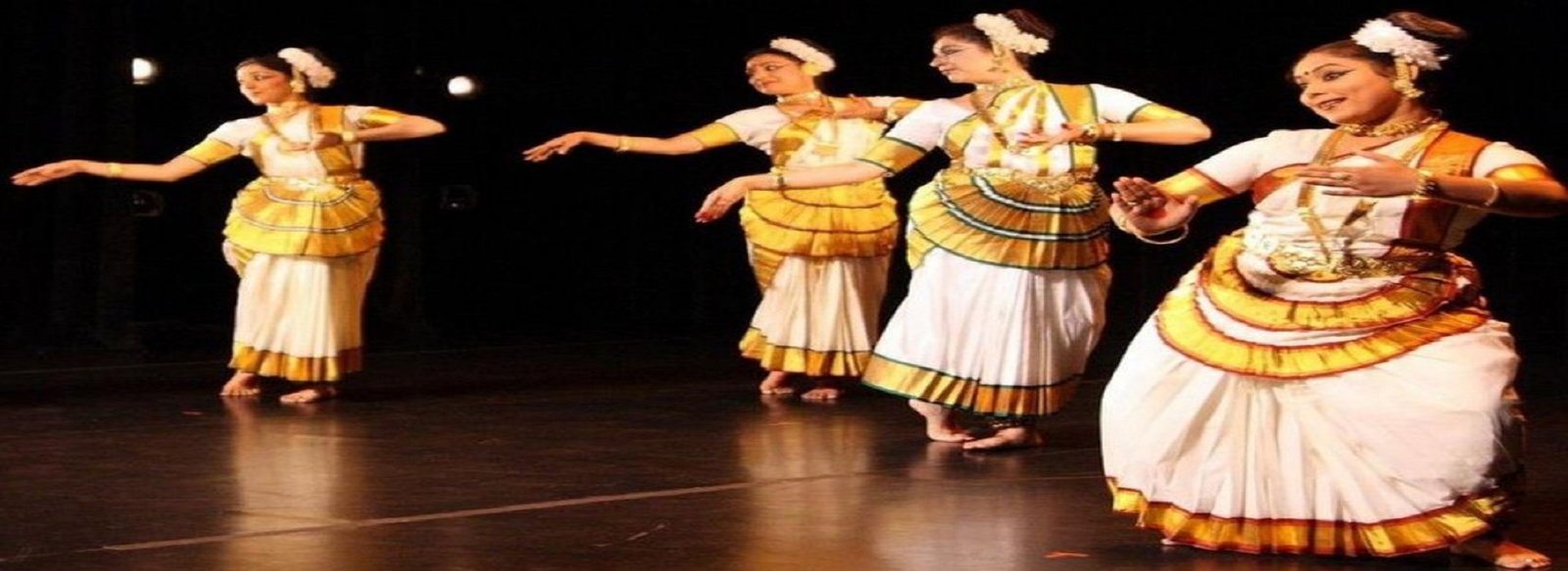
Pingback: Famous Dances of Punjab - Same Day Tour Blog
Pingback: Mujra History & Top Facts - Same Day Tour Blog
Pingback: Scintillating Folk Dance of Karnataka - Same Day Tour Blog
Pingback: Full Moon Light At Taj Mahal- Chamki Chamki Chamki - Taj With Guide Blog
Pingback: Folk and Classical Tamil Nadu Dance Forms - Same Day Tour Blog
Pingback: Dance Forms of Karnataka - Sam India Tour